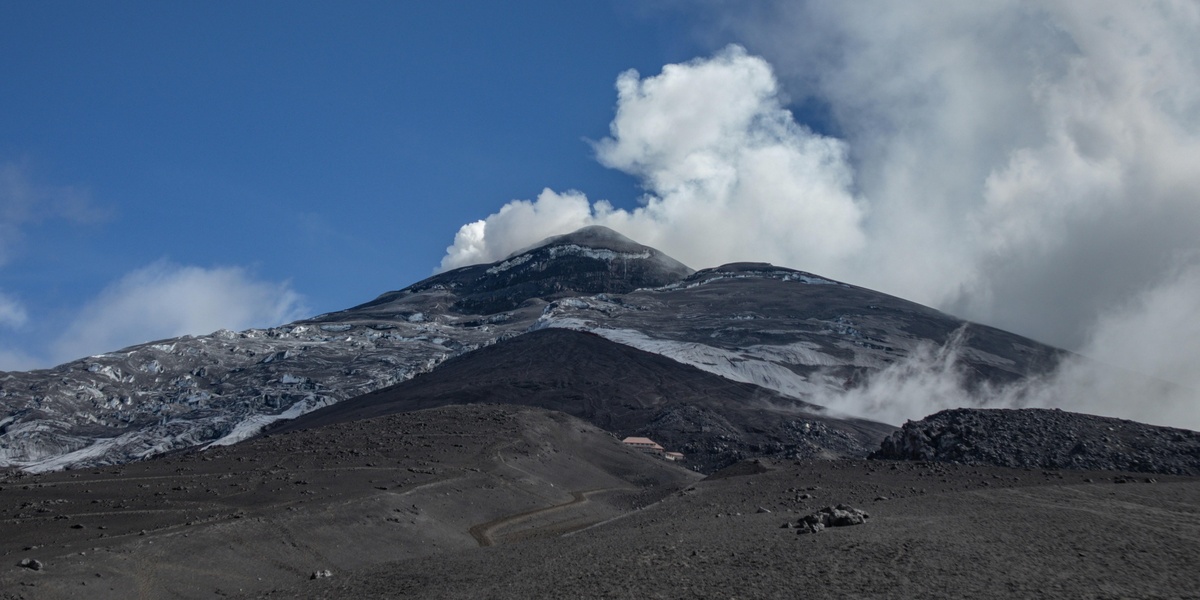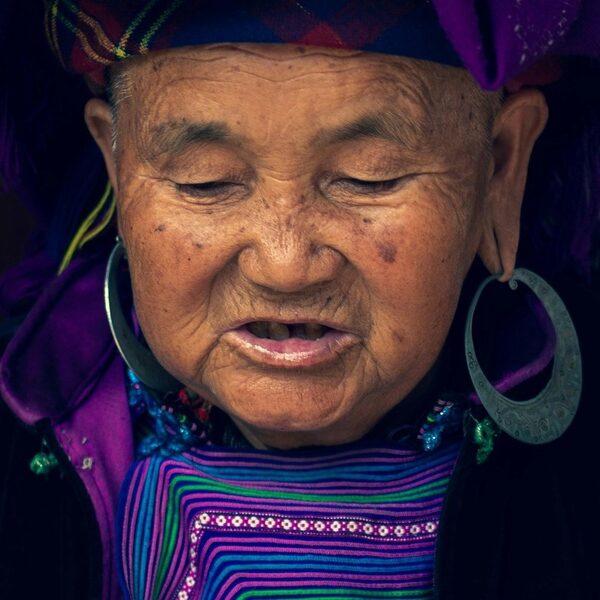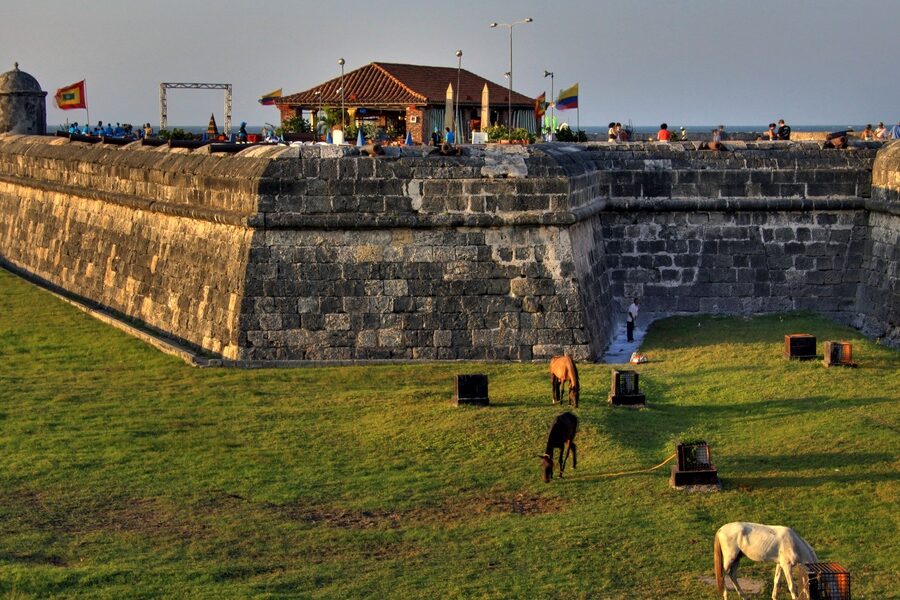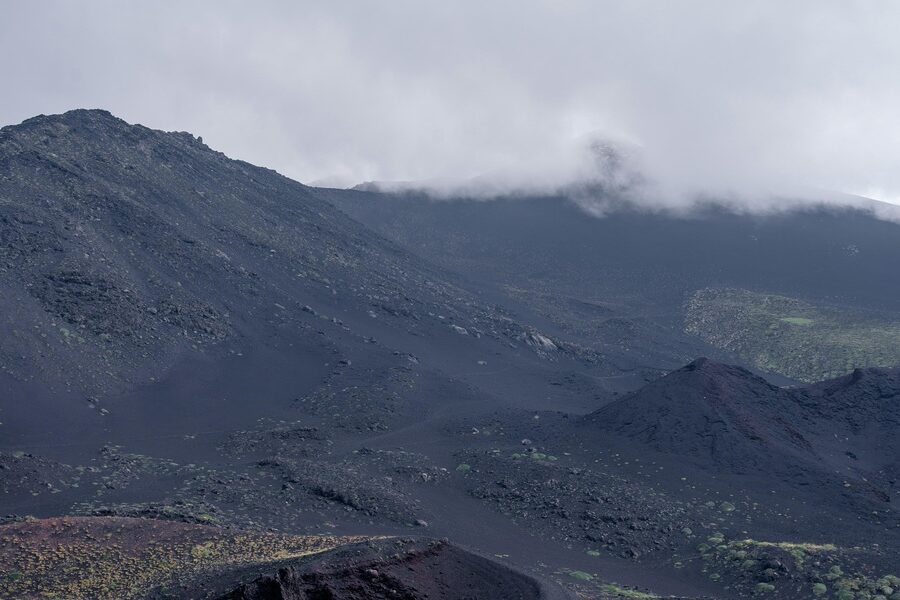South America sits atop a complex seam of tectonic plates and volcanic arcs, so its landscapes are shaped as much by fire as by ice. From high Andean peaks to coastal cones, active vents have influenced ecosystems, local climates, and human settlement patterns for millennia.
There are exactly 64 Active volcanoes in South America, ranging from Antisana to Yucamane. For each entry, you’ll find below a table organized by Country,Coordinates (lat, lon),Last eruption (year); you’ll find below.
How recent and reliable is the eruption information in the list?
The dates come from a mix of national geological surveys, Smithsonian/Global Volcanism Program summaries, and peer-reviewed reports; most entries note the last confirmed eruption year but monitoring density varies by country, so “recent” can mean different things depending on local monitoring and reporting.
What should I check before visiting areas near these volcanoes?
Look up current alerts from the local geological agency, review aviation notices if flying nearby, and respect exclusion zones and guidance from park authorities—volcanic hazards include ash, gas, lahars, and sudden unrest that can change access and safety conditions quickly.
Active Volcanoes in South America
| Name | Country | Coordinates (lat, lon) | Last eruption (year) |
|---|---|---|---|
| Antofalla | Argentina | -26.07, -67.88 | 1911 |
| Copahue | Argentina | -37.85, -61.18 | 2021 |
| Planchón-Peteroa | Argentina | -35.24, -70.57 | 2019 |
| Tromen | Argentina | -37.14, -70.03 | 1822 |
| Irruputuncu | Bolivia | -20.73, -68.55 | 1995 |
| Olca-Paruma | Bolivia | -20.94, -68.48 | 1867 |
| Ollagüe | Bolivia | -21.30, -68.18 | 1903 |
| Parinacota | Bolivia | -18.16, -69.14 | 290 |
| Uturuncu | Bolivia | -22.27, -67.18 | unknown |
| Calbuco | Chile | -41.33, -72.61 | 2015 |
| Carrán-Los Venados | Chile | -40.35, -72.07 | 1979 |
| Cerro Azul | Chile | -35.65, -70.76 | 1967 |
| Cerro Hudson | Chile | -45.90, -72.97 | 1991 |
| Chaitén | Chile | -42.83, -72.65 | 2011 |
| Copahue | Chile | -37.85, -61.18 | 2021 |
| Cordón Caulle | Chile | -40.52, -72.12 | 2012 |
| Guallatiri | Chile | -18.42, -69.16 | 1960 |
| Irruputuncu | Chile | -20.73, -68.55 | 1995 |
| Isluga | Chile | -19.15, -68.83 | 1913 |
| Láscar | Chile | -23.37, -67.73 | 2023 |
| Llaima | Chile | -38.69, -71.73 | 2009 |
| Lonquimay | Chile | -38.38, -71.58 | 1990 |
| Melimoyu | Chile | -44.08, -72.88 | 200 |
| Michinmahuida | Chile | -43.43, -72.43 | 1835 |
| Mocho-Choshuenco | Chile | -39.93, -72.03 | 1864 |
| Nevado Ojos del Salado | Chile | -27.11, -68.54 | uncertain |
| Nevados de Chillán | Chile | -36.86, -71.37 | ongoing |
| Osorno | Chile | -41.10, -72.49 | 1869 |
| Planchón-Peteroa | Chile | -35.24, -70.57 | 2019 |
| Puyehue-Cordón Caulle | Chile | -40.59, -72.12 | 2012 |
| San José | Chile | -33.78, -69.90 | 1960 |
| San Pedro | Chile | -21.88, -68.40 | 1960 |
| Taapaca | Chile | -18.10, -69.51 | 320 BC |
| Tupungatito | Chile | -33.40, -69.80 | 1986 |
| Villarrica | Chile | -39.42, -71.93 | ongoing |
| Azufral | Colombia | -1.08, -77.68 | 930 BC |
| Cerro Bravo | Colombia | 5.09, -75.29 | 1720 |
| Cerro Machín | Colombia | 4.48, -75.39 | 1180 |
| Cumbal | Colombia | 0.95, -77.88 | 1926 |
| Doña Juana | Colombia | 1.47, -76.92 | 1906 |
| Galeras | Colombia | 1.22, -77.37 | 2014 |
| Nevado del Huila | Colombia | 2.93, -76.03 | 2012 |
| Nevado del Ruiz | Colombia | 4.89, -75.32 | 2017 |
| Puracé | Colombia | 2.32, -76.40 | 1977 |
| Sotará | Colombia | 2.11, -76.60 | unknown |
| Antisana | Ecuador | -0.48, -78.14 | 1802 |
| Cayambe | Ecuador | 0.03, -77.99 | 1786 |
| Chiles-Cerro Negro | Ecuador | 0.82, -77.94 | 160,000 BC |
| Cotopaxi | Ecuador | -0.68, -78.44 | 2016 |
| El Reventador | Ecuador | -0.08, -77.66 | ongoing |
| Guagua Pichincha | Ecuador | -0.17, -78.60 | 2002 |
| Mojanda | Ecuador | 0.13, -78.27 | unknown |
| Pululahua | Ecuador | 0.04, -78.46 | 467 BC |
| Quilotoa | Ecuador | -0.85, -78.90 | 1280 |
| Sangay | Ecuador | -2.00, -78.34 | ongoing |
| Tungurahua | Ecuador | -1.47, -78.44 | 2016 |
| Coropuna | Peru | -15.52, -72.65 | unknown |
| El Misti | Peru | -16.29, -71.41 | 1985 |
| Huaynaputina | Peru | -16.61, -70.85 | 1600 |
| Sabancaya | Peru | -15.78, -71.85 | ongoing |
| Ticsani | Peru | -16.76, -70.60 | 1800 |
| Tutupaca | Peru | -17.03, -70.37 | 1802 |
| Ubinas | Peru | -16.36, -70.90 | 2023 |
| Yucamane | Peru | -17.18, -70.20 | 1902 |
Images and Descriptions
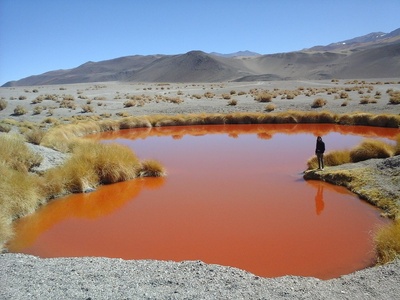
Antofalla
This massive stratovolcano complex is one of the highest active volcanoes in the world. While its last confirmed eruption was over a century ago, its sheer size and extensive lava flows mark it as a significant, albeit remote, Andean giant.
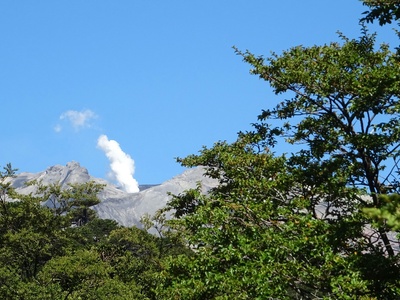
Copahue
Straddling the border with Chile, Copahue is known for its acidic crater lake and frequent, small-to-moderate ash and gas explosions. Its activity poses a direct hazard to nearby communities through ashfall and potential acidic river contamination.
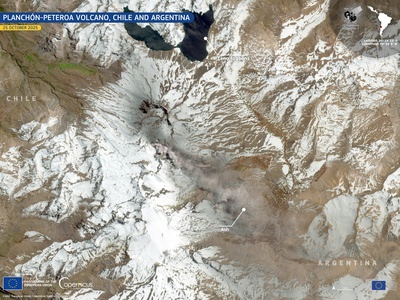
Planchón-Peteroa
This volcanic complex, shared with Chile, has a history of powerful explosive eruptions. Recent activity has been characterized by ash plumes and gas emissions, reminding us of its potential to disrupt local agriculture and air traffic in both countries.
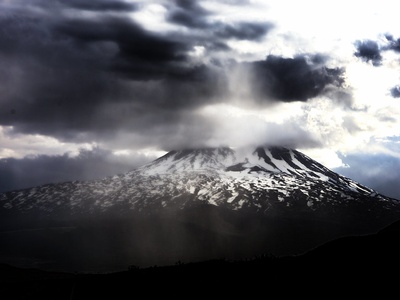
Tromen
Located in northern Patagonia, Tromen is a notable stratovolcano whose historical eruptions produced extensive basaltic lava flows. Although quiet for two centuries, its past activity indicates it remains a potentially hazardous feature in the region.

Irruputuncu
A stratovolcano on the border with Chile, Irruputuncu features vigorous fumarolic activity from its two summit craters. Its last eruption was a minor phreatic event, but its persistent degassing suggests an active magmatic system below.
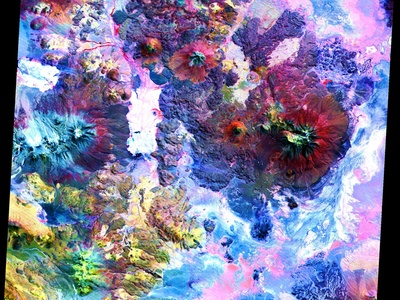
Olca-Paruma
This volcanic range on the Chilean border consists of several stratovolcanoes. Its most recent historical activity involved flank eruptions that produced a significant lava flow, showcasing its potential for effusive, land-altering events.
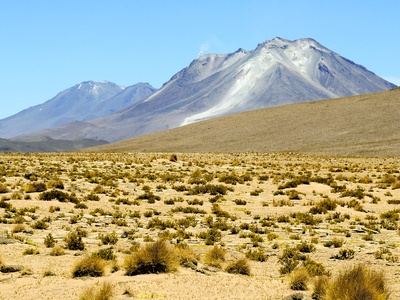
Ollagüe
Shared with Chile, this large stratovolcano is distinguished by its constant and prominent plume of sulfurous gas. While no eruptions have been confirmed in over a century, its active fumaroles make it a popular but potentially hazardous tourist destination.
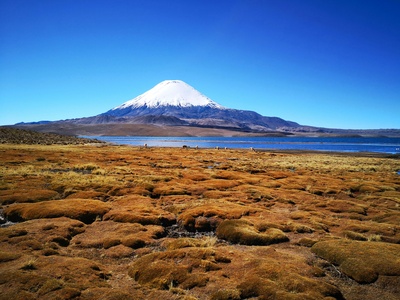
Parinacota
A beautifully symmetrical stratovolcano on the border with Chile, Parinacota’s last major eruption caused a massive debris avalanche that dammed a river to form Lake Chungará. It remains seismically active, indicating it is still a sleeping giant.
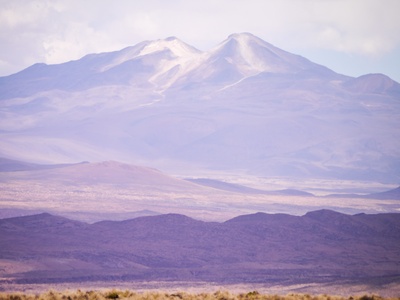
Uturuncu
This volcano is notable for the rapid uplift of the ground beneath it, one of the fastest-rising areas on Earth. While it hasn’t erupted in at least 270,000 years, this deformation suggests a massive magma body is growing, making it a focus of intense study.
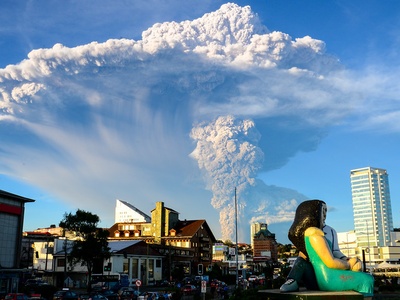
Calbuco
Calbuco is a highly explosive stratovolcano known for its violent, unexpected eruptions. The 2015 event sent a colossal ash column miles into the atmosphere, causing widespread evacuations and blanketing the region in thick ash.
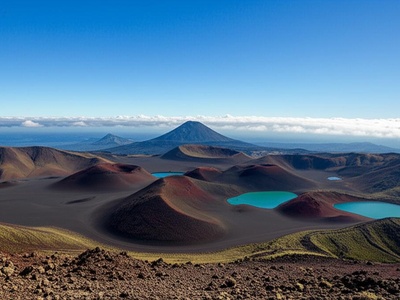
Carrán-Los Venados
This volcanic group is characterized by a series of scoria cones, maars, and a small stratovolcano. Its eruptions are typically small and effusive, but the potential for new vents to open in the area keeps local authorities vigilant.
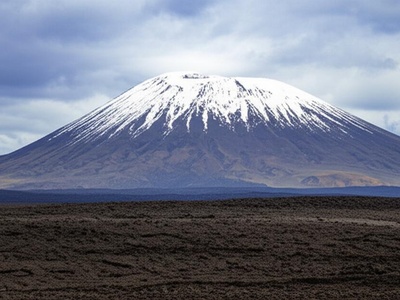
Cerro Azul
Part of the Descabezado Grande-Cerro Azul system, this volcano produced one of the largest effusive eruptions of the 20th century in 1932. This event created a massive lava field and demonstrated its capacity for high-volume eruptions.
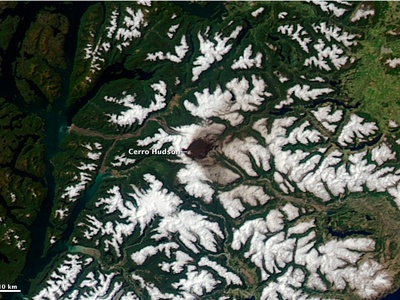
Cerro Hudson
Responsible for one of the largest eruptions of the 20th century, Cerro Hudson’s 1991 blast had a global impact on the atmosphere. The eruption produced enormous mudflows and devastated a huge area of Patagonia with ashfall.
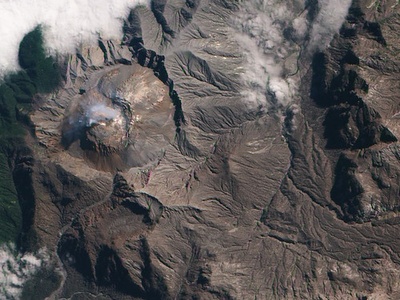
Chaitén
After centuries of dormancy, Chaitén spectacularly reawakened in 2008 with a powerful explosive eruption. It extruded a new lava dome, devastated the nearby town with mudflows (lahars), and coated the landscape in a thick layer of ash.

Copahue
Straddling the border with Argentina, Copahue is persistently active, featuring a hot, acidic crater lake. Its frequent small phreatic and strombolian eruptions release ash and gas, posing a continuous, low-level threat to the surrounding alpine valleys.
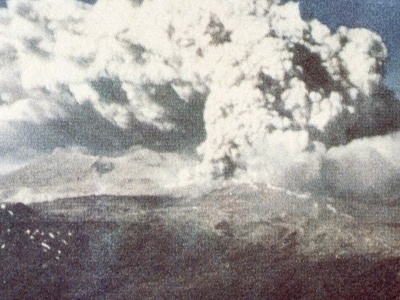
Cordón Caulle
This fissure complex produced a massive rhyolitic eruption in 2011-2012, one of the largest of the 21st century. The eruption created a huge ash plume that circled the globe, disrupting air travel, and formed a new lava flow and crater.
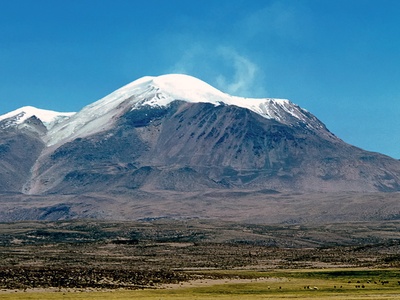
Guallatiri
One of Chile’s most active volcanoes, Guallatiri is characterized by intense, noisy fumarolic activity that often produces a visible steam plume. Its location in the high Andes means its frequent small eruptions pose little threat to populated areas.

Irruputuncu
This stratovolcano on the border with Bolivia has two summit craters with persistent, strong fumarolic activity. Its last confirmed eruption was a small phreatic explosion, highlighting its potential for sudden steam-driven blasts.
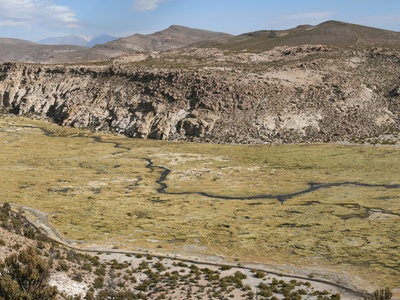
Isluga
A large stratovolcano in northern Chile, Isluga has a history of both explosive eruptions and effusive lava flows. Its activity can produce ashfall and lahars, posing a potential hazard to the few small communities in the surrounding high plains.
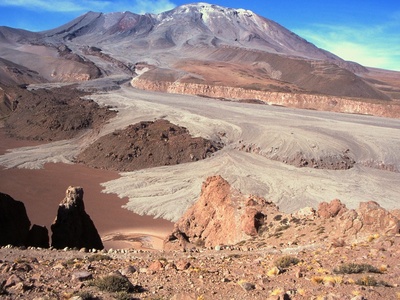
Láscar
The most active volcano in the northern Chilean Andes, Láscar is known for its frequent, sudden explosive eruptions that can generate significant ash plumes. Its persistent activity and unpredictable nature make it a top monitoring priority.
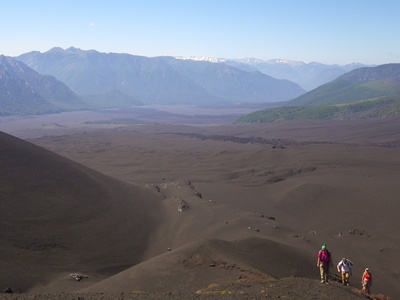
Llaima
One of Chile’s largest and most active volcanoes, Llaima has a history of frequent and powerful eruptions. Its activity often includes explosive strombolian bursts, lava flows, and the generation of destructive lahars that threaten downstream valleys.
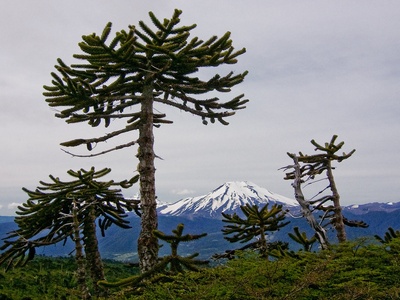
Lonquimay
Lonquimay is famous for its 1988-1990 eruption, which created a new cone, Navidad, and a 10 km long lava flow. This event provided a dramatic example of how volcanic landscapes can be rapidly and dramatically altered.
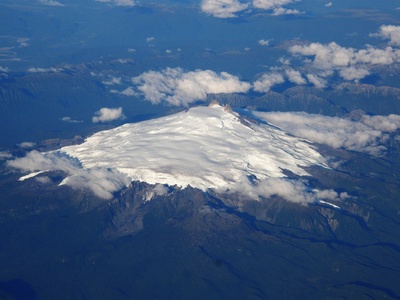
Melimoyu
A massive, ice-capped stratovolcano in a remote part of Patagonia. Evidence of a large eruption about 1,800 years ago and recent seismic unrest suggest it is an active system with the potential for hazardous explosive, ice-melting eruptions.
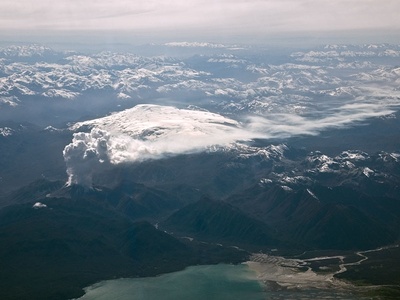
Michinmahuida
Located just north of the famous Chaitén volcano, this large, ice-covered volcano has a history of explosive eruptions. Its massive ice cap means any future eruption could generate enormous, destructive mudflows (lahars).
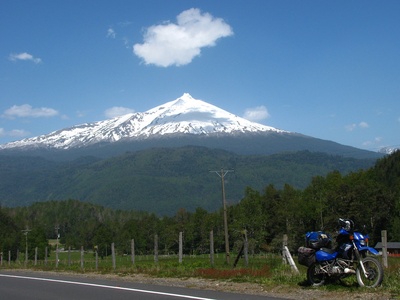
Mocho-Choshuenco
This volcanic complex consists of two main cones covered by a large glacier. Its eruptions can be highly explosive and pose a major lahar hazard due to the interaction of hot material with the significant ice pack on its summit.
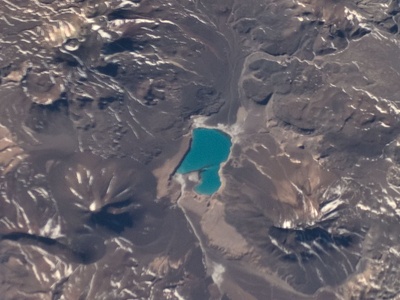
Nevado Ojos del Salado
As the world’s highest active volcano, its primary claim to fame is its elevation. While its last eruption is uncertain (possibly 1,300 years ago), it exhibits persistent fumarolic activity, confirming it’s not extinct.
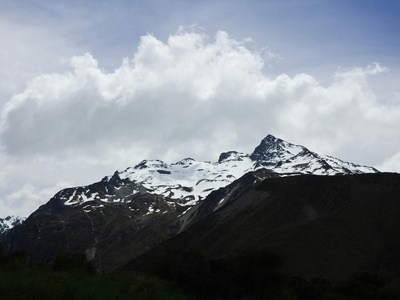
Nevados de Chillán
This complex of several stratovolcanoes and lava domes is one of Chile’s most active. It has been in a state of eruption since 2016, characterized by explosions, ash plumes, and the growth of a new lava dome on its flank.
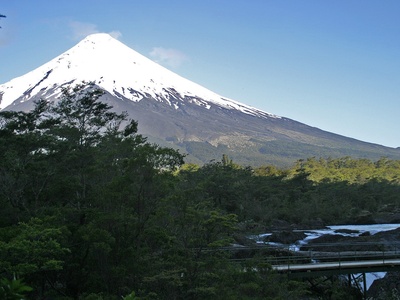
Osorno
With its perfect, snow-capped cone, Osorno is an iconic landmark of the Chilean Lake District. Though its last eruption was in the 19th century, it is considered a high-threat volcano due to its explosive potential and proximity to popular tourist areas.

Planchón-Peteroa
Shared with Argentina, this complex has been persistently active in recent years with frequent small ash and gas emissions. Its history includes large explosive events, making it a significant hazard for communities on both sides of the Andes.
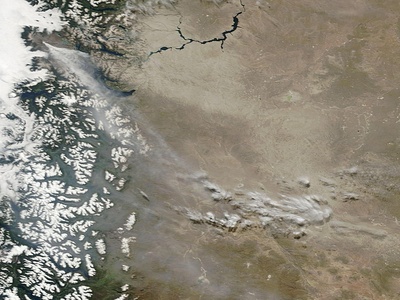
Puyehue-Cordón Caulle
This vast volcanic system famously erupted in 2011-2012 from the Cordón Caulle fissure, sending an ash cloud around the world. The eruption was one of the largest of the 21st century, highlighting the system’s immense power.
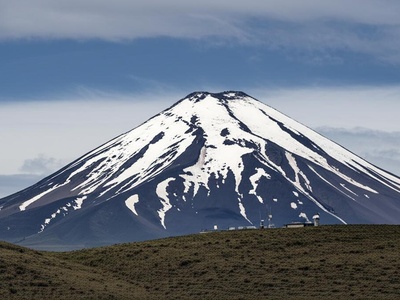
San José
Located near Santiago, the capital of Chile, this volcano’s proximity to a major metropolitan area makes it a significant potential hazard. Its activity includes explosive eruptions and lava flows, and it is closely monitored.
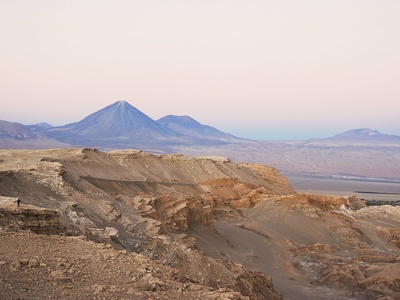
San Pedro
Paired with its neighbor San Pablo, San Pedro is a towering stratovolcano in the Atacama Desert. It has a history of producing extensive lava flows, and its recent activity includes minor ash emissions and persistent fumaroles.
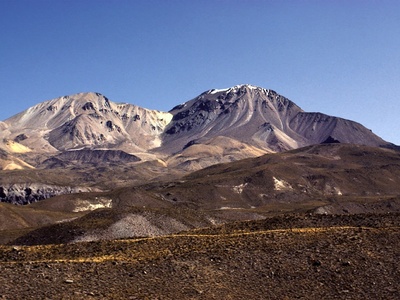
Taapaca
Located near the town of Putre, this complex of lava domes poses a significant local hazard. Its past eruptions have been explosive and have produced pyroclastic flows, a dangerous, fast-moving mix of hot gas and volcanic debris.
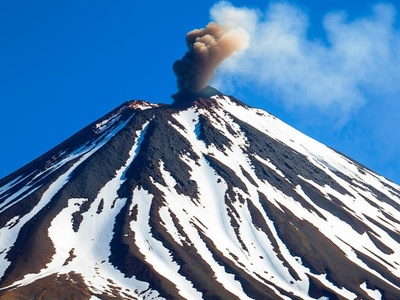
Tupungatito
As the name suggests, it is a smaller neighbor to the massive Tupungato volcano. Tupungatito is frequently active, with at least 18 small explosive eruptions recorded in the 20th century, making it a persistent source of local ashfall.
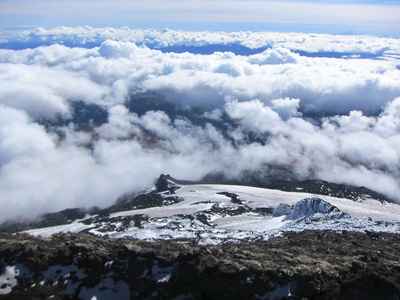
Villarrica
One of South America’s most active and iconic volcanoes, Villarrica is famous for its persistent summit lava lake. It erupts frequently, posing a constant threat of lava flows, explosions, and devastating mudflows (lahars) to the tourist towns at its base.
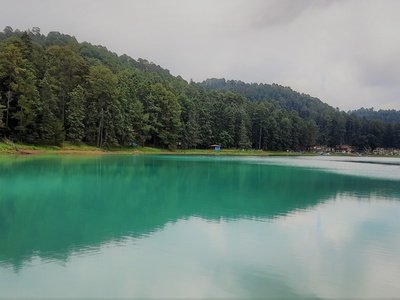
Azufral
Known for its stunning green crater lake, Laguna Verde, Azufral is considered active due to its strong fumaroles and seismic activity. While its last magmatic eruption was thousands of years ago, it has the potential for future steam-driven explosions.
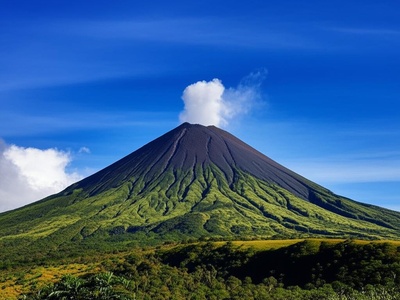
Cerro Bravo
This stratovolcano is covered by dense vegetation, but its past is marked by explosive eruptions that produced pyroclastic flows. Its proximity to the city of Manizales and major infrastructure makes it a volcano of concern for authorities.
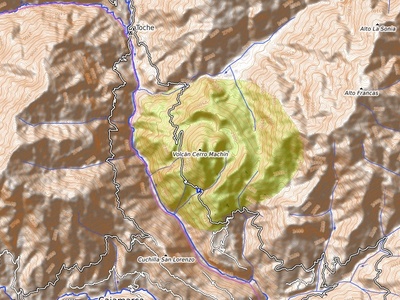
Cerro Machín
Despite its small size, Machín is considered one of Colombia’s most dangerous volcanoes. This is due to its history of infrequent but extremely violent explosive eruptions and its location in a densely populated agricultural region.
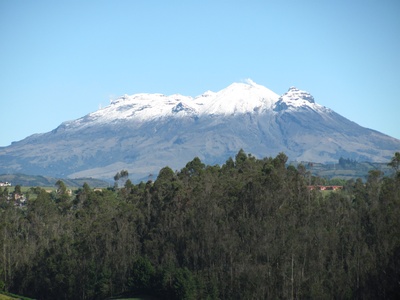
Cumbal
As the southernmost historically active volcano in Colombia, Cumbal is notable for its intense fumarolic activity. Its two craters regularly emit sulfurous gases, and while eruptions are rare, the potential for activity remains.
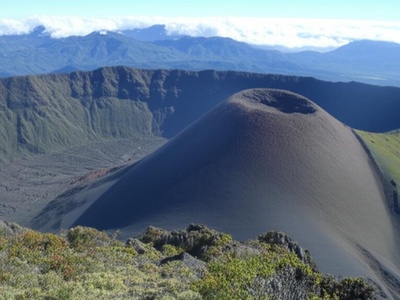
Doña Juana
This complex stratovolcano is located in a remote, protected national park. Its last major eruption in the early 20th century was explosive and formed a new lava dome, showcasing its potential for dangerous, dome-building eruptive cycles.
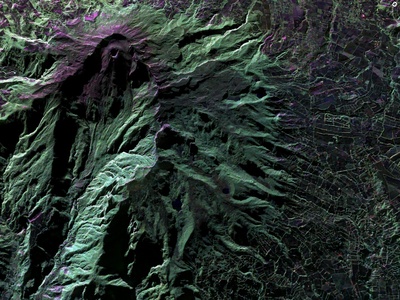
Galeras
One of Colombia’s most active and dangerous volcanoes, Galeras looms over the city of Pasto. Its frequent, often unpredictable, small-to-moderate explosive eruptions pose a constant threat to the city and the scientists who study it.
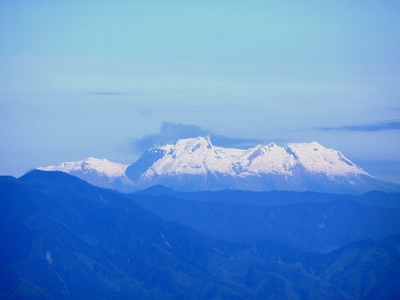
Nevado del Huila
Topped by a large ice cap, this is the highest active volcano in Colombia. Recent eruptions have been explosive and have generated dangerous lahars (volcanic mudflows) due to the rapid melting of its summit glacier.
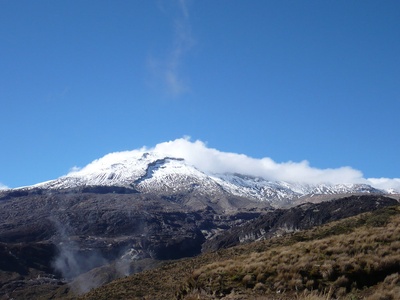
Nevado del Ruiz
Infamous for its 1985 eruption that triggered catastrophic lahars, killing over 23,000 people in the town of Armero. It remains highly active, with persistent gas emissions and small ash explosions, posing an ongoing threat of repeat disasters.
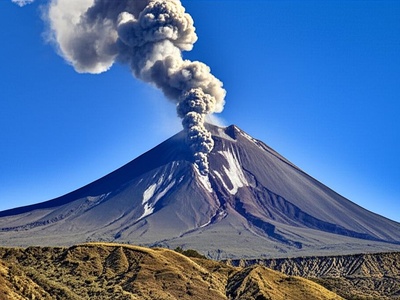
Puracé
Part of a chain of volcanoes, Puracé is one of Colombia’s most active, with over 30 eruptions in the past 200 years. Its activity is typically characterized by small explosions that emit ash and gas, often with little warning.
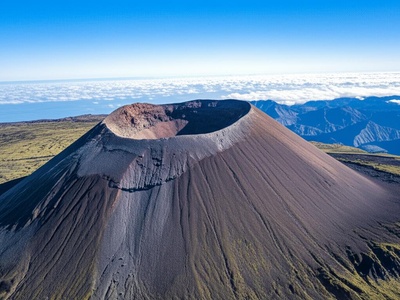
Sotará
While there are no confirmed historical eruptions, Sotará is considered active due to its persistent seismic activity and strong fumaroles. It is located in a remote area, but its potential for future eruptions warrants monitoring.
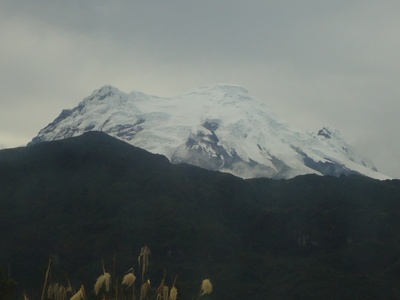
Antisana
A massive, glacier-covered stratovolcano in the high Andes, Antisana’s last eruption produced a significant lava flow. Its large ice cap means any future explosive activity could generate dangerous, far-reaching lahars.
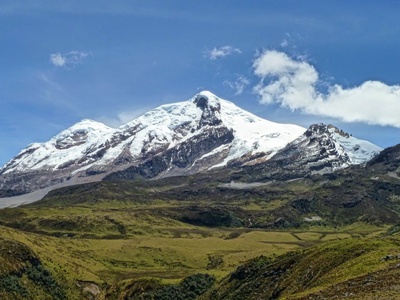
Cayambe
As the only major volcano in the world whose summit is crossed by the equator, Cayambe is also the highest point on the equator. This ice-clad giant has a history of explosive eruptions, posing a significant lahar and ashfall hazard.
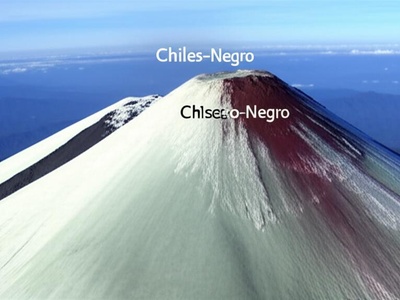
Chiles-Cerro Negro
This volcanic complex on the border with Colombia has not had a recent magmatic eruption but is listed due to intense, ongoing seismic swarms and ground deformation. This unrest suggests a magmatic intrusion is in progress, potentially leading to a future eruption.
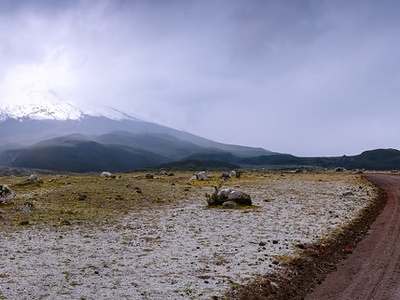
Cotopaxi
One of the world’s most dangerous volcanoes, the iconic, cone-shaped Cotopaxi looms over heavily populated areas. Its massive glaciers and history of violent explosive eruptions create an extreme risk of catastrophic lahars.
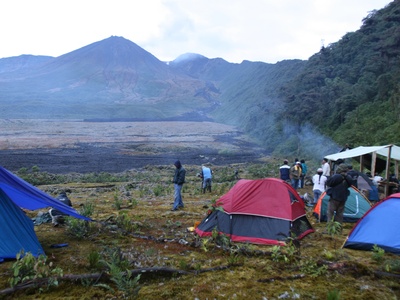
El Reventador
Living up to its name (“The Exploder”), this remote volcano has been in a near-constant state of eruption since a massive 2002 blast. Its daily activity includes explosions, ash plumes, and the extrusion of thick lava flows.
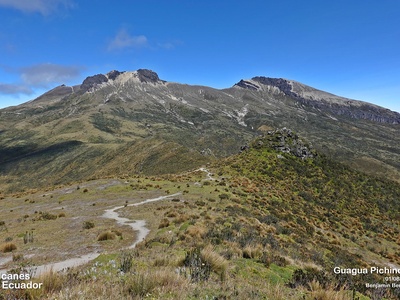
Guagua Pichincha
This volcano’s caldera is located on the western flank of a larger mountain, looming directly over Ecuador’s capital, Quito. Its 1999 eruption dropped several inches of ash on the city, highlighting its significant urban hazard.
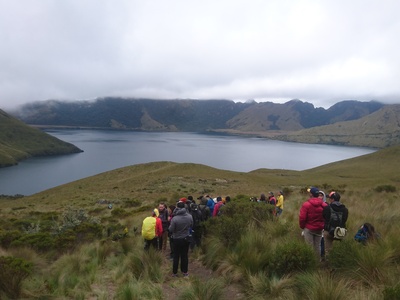
Mojanda
This complex volcano is best known for the large caldera at its summit, which contains the scenic lakes of Mojanda. Holocene-age lava flows on its flanks indicate it is a potentially active system, though it has been quiet in historical times.
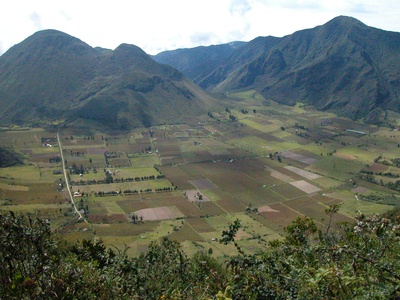
Pululahua
Located just north of Quito, this volcano is famous for its massive, inhabited caldera, one of only a few in the world where people live inside. Its last major eruption was a powerful, caldera-forming event over 2,400 years ago.
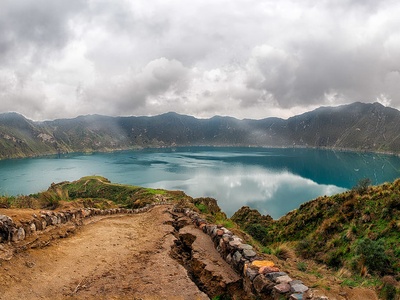
Quilotoa
This volcano is renowned for its stunning, 3-km-wide caldera filled with a deep, turquoise-colored lake. The lake was formed after a catastrophic explosive eruption about 800 years ago, one of the largest in the Andes in the last millennium.
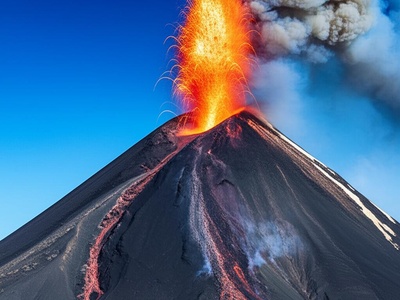
Sangay
One of the most active volcanoes in the world, Sangay has been in a continuous state of eruption for decades. Its activity consists of frequent strombolian explosions, lava flows, and ash emissions that regularly affect downwind communities.
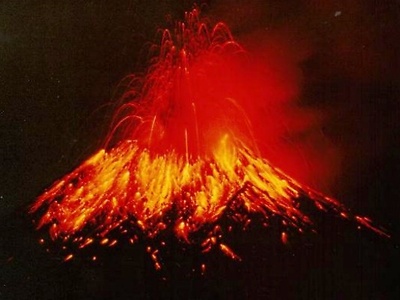
Tungurahua
Known as the “Throat of Fire,” this steep-sided stratovolcano had a dramatic eruptive period from 1999 to 2016. Its powerful explosions generated dangerous pyroclastic flows and ashfalls that frequently threatened the tourist town of Baños at its base.
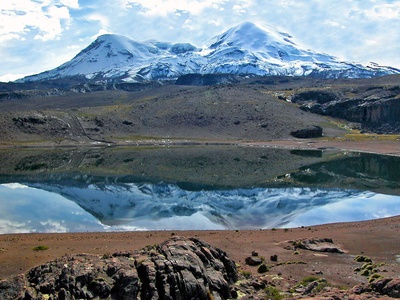
Coropuna
As Peru’s highest and largest volcano, this massive, ice-capped complex is a sleeping giant. While there are no historical eruptions, geologically recent lava flows confirm its active status, and its ice presents a major lahar risk.
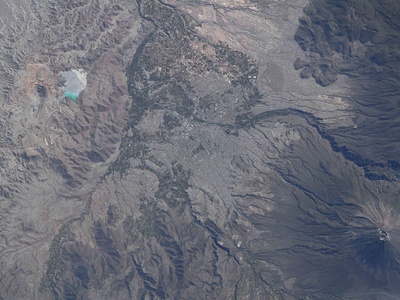
El Misti
This iconic, symmetrical stratovolcano stands directly over the city of Arequipa, home to over a million people. Its history of explosive eruptions makes it one of the most hazardous volcanoes in South America due to its urban proximity.

Huaynaputina
In 1600, this relatively inconspicuous volcano produced the largest historical eruption in South American history. The cataclysmic event had global climate impacts and buried the surrounding region in meters of ash and pyroclastic flows.
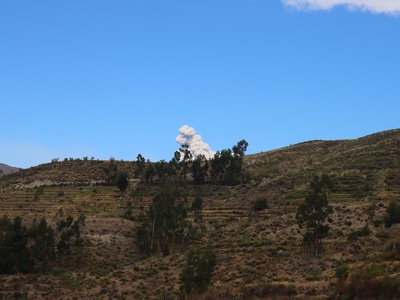
Sabancaya
Meaning “tongue of fire” in Quechua, Sabancaya reawakened in 2016 and has been in a state of continuous eruption since. It regularly produces moderate explosive puffs of ash and gas, which pose a hazard to nearby communities and livestock.
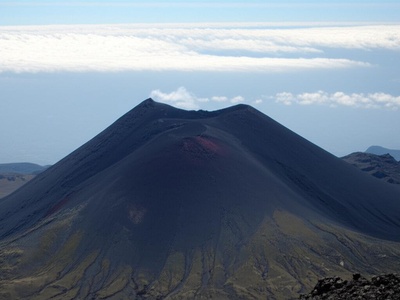
Ticsani
This volcanic complex consists of two cones and several lava domes. Its history of dome-building eruptions and powerful explosions makes it a significant threat, especially the potential for dome collapse to generate pyroclastic flows.
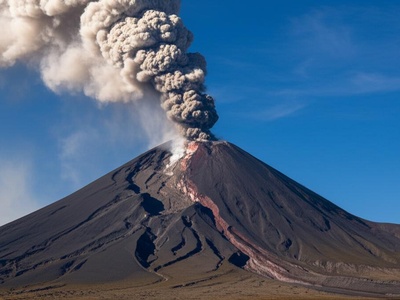
Tutupaca
This volcano experienced a massive flank collapse and subsequent explosive eruption around 200 years ago. This history of instability, combined with recent seismic unrest, indicates it remains a potentially hazardous and unpredictable volcano.
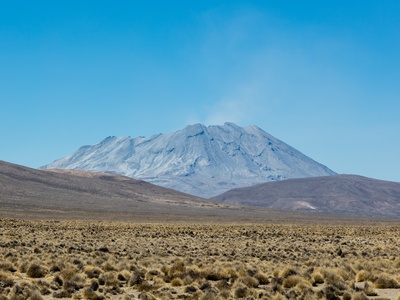
Ubinas
Peru’s most active volcano, Ubinas, frequently produces small-to-moderate explosive eruptions from the crater on its truncated summit. These events generate ash clouds that disrupt local agriculture and sometimes require community evacuations.
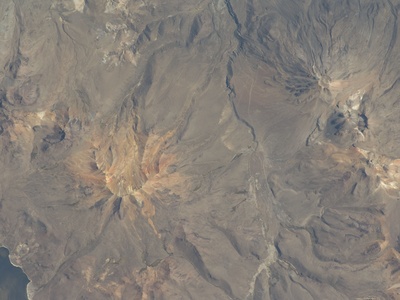
Yucamane
Located in a remote part of southern Peru, Yucamane is a stratovolcano with a history of explosive eruptions. Its activity poses a threat primarily through ashfall, which can impact local farming and water supplies.

